A balanced meal: a meal that provides the nutrients and energy you need to keep you full and nourished.
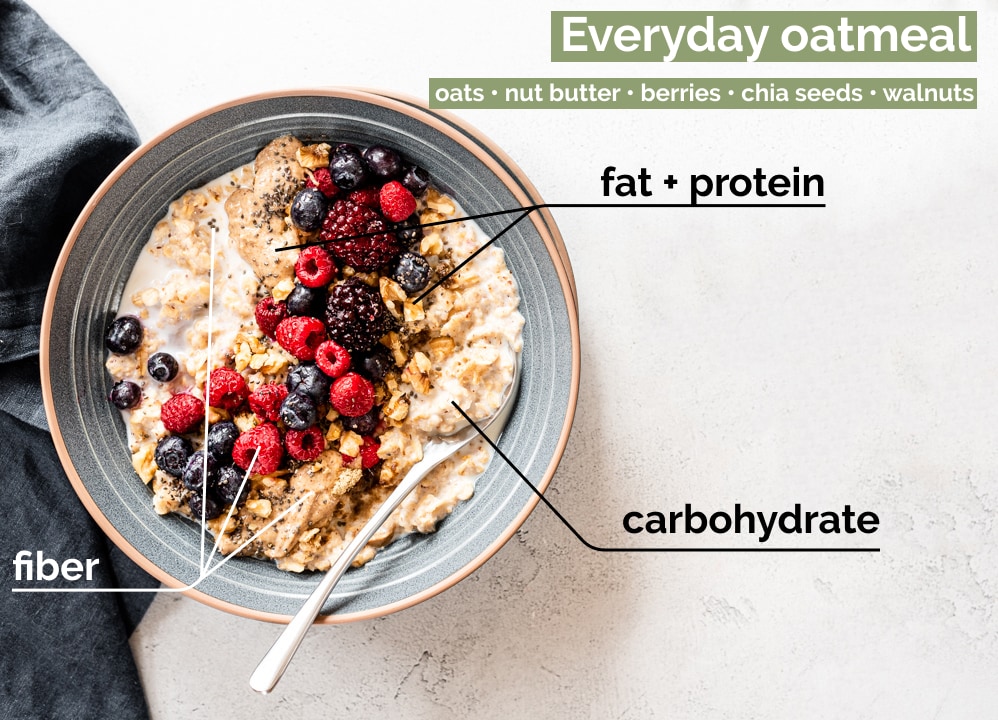
When building a balanced meal, the top priorities are flexibility, enjoyment and gentle nutrition. Making a balanced meal doesn't have to be complicated or time-consuming.
And there is no perfect formula out there to tell us exactly what to eat.
But there is one thing I can tell you right off the bat - ditch the food rules. Trying to navigate strict food rules (eat this, not that…) will certainly make it more difficult (and less enjoyable) to build balanced meals.
Intuitive eating
Let's take a moment to talk about intuitive eating. Intuitive eating is about listening to your body without judgement, honoring your hunger and fullness, and giving yourself permission to eat whatever you want without food rules or guilt. It's the exact opposite of the diet mentality.
Listening without judgement is the most important part here. By ditching the diet mentality, listening to our body's hunger and fullness cues, and noticing how each food choice makes the body feel, we can stop obsessing over the foods we eat, and just enjoy them already. Intuitive eating means thinking about what foods sound good to our taste buds and our health.
Building a balanced meal with intuitive eating
Many people may think planning meals and intuitive eating are mutually exclusive, but in my opinion they go hand in hand.
With intuitive eating, it's important to listen to your body and decide what foods you like and which foods make you feel good.
But if you're anything like me, you probably don't have time to think about what you want to eat and then go get groceries every day. That's where planning ahead comes into play.
Planning ahead streamlines the process. Being prepared with the ingredients and meals that you enjoy will help you honor your hunger, because the food is already available.
Trying to figure out what to eat when you're already really hungry doesn't often result in rational food choices.
Building a balanced meal is not about making sure you have the right amount of this and not too much of that.
Planning a balanced meal with intuitive eating isn't about what you think you should eat - no calorie or macro counting, no points, no restrictions.
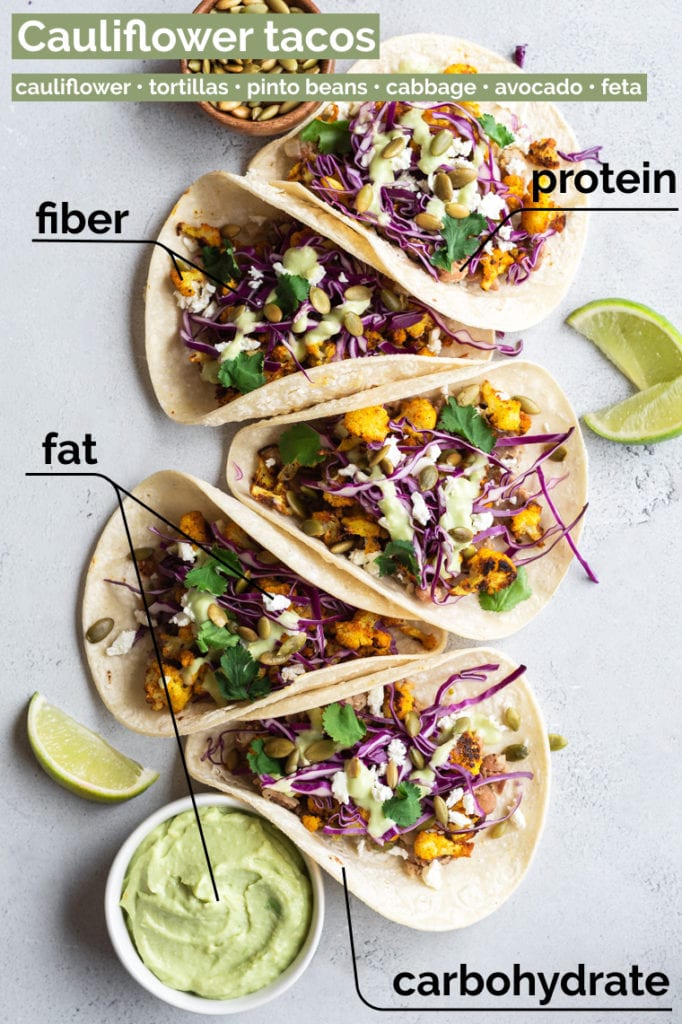
What makes a balanced meal?
A balanced meal consists of four main parts: Carbohydrates, Fats, Protein & Fiber.
Protein, fat and carbohydrates are the three macronutrients, each breaking down into components that provide calories and energy. In contrast, vitamins and minerals are what we call micronutrients.
All are equally important, but are needed in different amounts.
Foods often provide more than one macronutrient. For example, quinoa is mostly carbohydrates, but it also contains protein, fiber and a small amount of fat.
Carbohydrates are made of up sugars (not table sugar) called monosaccharides and disaccharides. Carbohydrates are the body's main source of energy. The brain. Muscles. Everything needs carbohydrates to function.
Sources of carbohydrates include fruit, beans, vegetables (starchy and non-starchy), and grains (whole and refined like rice, pasta, corn, wheat, oats, quinoa).
Fats (aka fatty acids) are energy-rich and help us absorb fat soluble vitamins like vitamins A, D, E and K. Fat is vital for the brain, hormone production, and important for healthy skin, hair and nails.
Sources of fat include oil (olive, coconut, canola, etc.), butter, nuts, seeds, avocado, meat, poultry, eggs, dairy, olives. Check out our lowdown on fats for more information about different types of fat.
Protein is built with various amino acids which help build enzymes and muscle tissue. Protein plays an important role in the growth and function of pretty much everything in our body.
Fiber is not technically its own macronutrient (it's actually a carbohydrate), but it's super important for your health. And most people would benefit from adding more, so I'm including it here as it's own component.
Fiber is known as the roughage - the part of plants that our bodies can't digest. Unlike the other macronutrients, our bodies don't break down fiber. Instead, it remains intact when passing through the digestive system and out of the body. Fiber can help lower cholesterol, keep you feeling full longer, help regulate bowel movements, and keep blood sugar more stable.
Fiber is found in fruits, vegetables, beans and legumes, grains, nuts and seeds.
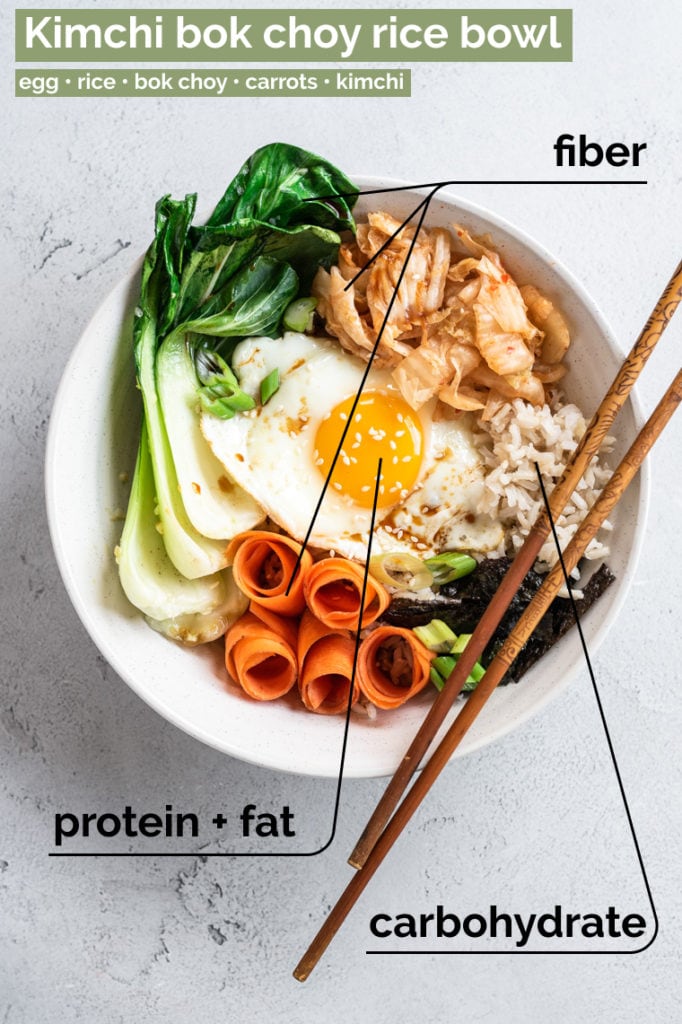
How to fix an unbalanced meal
Now what do you do if you find your meal isn't balanced? Well, it's usually a pretty simple fix.
Here are some examples of unbalanced meals and what to do to balance them:
- Spaghetti and meatballs - here we have carbohydrates (spaghetti and tomato sauce), protein (meatballs) and fat (meatballs and oil). What are we missing? Fiber! Using whole wheat spaghetti would provide a little fiber. But adding in another vegetable (or two!) like broccoli, kale or a side salad would help to make this a balanced meal.
- Chicken and spinach salad - we have protein (chicken), fiber (spinach) and fat (chicken and salad dressing). We're missing carbohydrates. If we added some grain into the salad or perhaps a small baguette we could balance out the meal.
- Oatmeal with fruit - oatmeal and fruit are both carbohydrates and fiber. In this meal, we're missing both fat and protein. You're not likely to stay full for very long without fat and protein. We could add some nuts, seeds or nut butter to get some protein and fat in this meal.
See, you've got this!
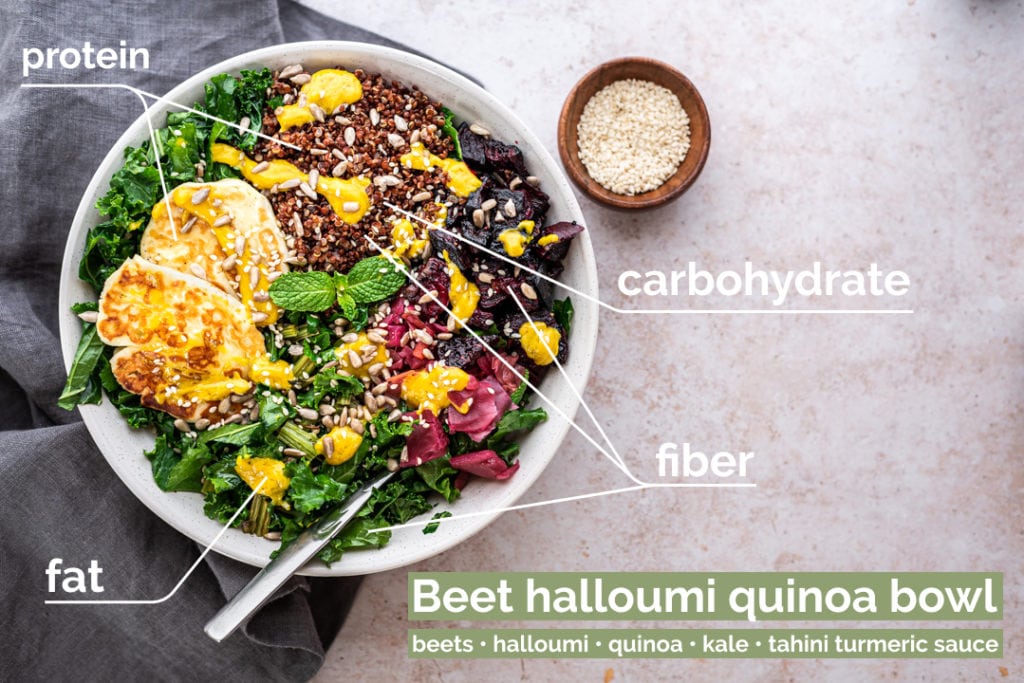
A stocked pantry (and intuitive eating) can help keep things balanced
Having different options available can help you ensure you have balanced meals AND keep things flexible so you can still eat according to what sounds good.
I always have a few different carb options (rice, farro, potatoes, tortillas, bread, pasta) and they don't all have to be whole wheat.
Sometimes a bowl of white rice with tofu and veggies sounds great. And on other days I prefer brown rice. By having both available, you have the option depending on what sounds good.
Easy protein additions include canned fish, canned/dried beans, nuts or nut butter, tofu, eggs and frozen chicken or beef. Keeping a variety of long-lasting options on hand can help rescue that unbalanced meal.
Olive oil, nuts and seeds, and cheese are all easy sources of fat to have on hand. After all, an extra drizzle of olive oil never hurt anyone.
Fiber can be an easy one too. I usually plan our week of meals thinking veggies first.
And when we have extras at the end of the week (spinach, kale, cauliflower, etc.), they become perfect additions to big weekend breakfasts or a leftovers night. Planning ahead can also help reduce food waste!
I also keep plenty of different fruits on hand for quality snacking, like apples, bananas, oranges and other in-season fruits.
Keeping a pantry stocked with different options can add variety to your eating.
From a nutrition standpoint, we know that different foods provide different nutrients that the body needs. So by eating a variety of foods, we help make sure the body gets everything it needs to function at its best.
And it jazzes up your meals with plenty of color.😉
There's no one right way, so find what works for you
Keep in mind, there is no right or wrong way to do this. Some people have no problem eating the same thing several times a week (my parents make a different balanced soup every Sunday and eat that throughout the week). Sounds boring to me… But it works for them!
I, on the other hand, like my variety and am totally fine with cooking every night so I get more variety in my meals. I use a combination of pantry items and perishables, easily switching things up if I feel like making something different than I had originally planned.
Start experimenting with creating balanced meals and notice how you feel after. How's your fullness after that meal? Do you feel satisfied? How long do you stay full? One hour? Two? Five?
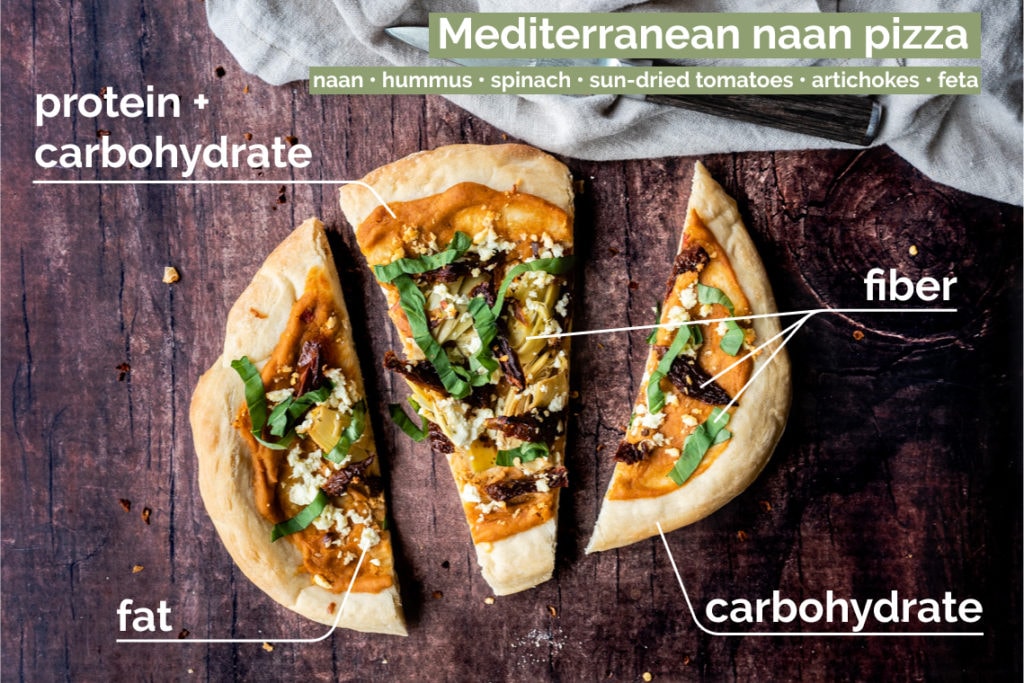
Remember, self-care not self-control
The biggest thing to consider with intuitive eating and building a balanced meal is to keep things flexible. When we start creating rules and rigidity around our meals - that's where the diet mentality starts to creep in.
Eat a salad because you enjoy it and it makes you feel good. Don't eat a salad because you think you should and you want to be "good".
Don't focus on the calories or points when deciding to eat something. And leave morality out of it. Food is food. Not good or bad.
Start experimenting with listening to your body, and notice how different foods make you feel. If you want a salad, but need something heartier, try adding in bread, grains, chicken, beans or some extra avocado. This will make it a balanced and filling meal.
A few things I've noticed over time --- lots of veggies make my body feel good, but only eating veggies doesn't keep me feeling full. Which is why I also need some carbs, protein and fat.
And if I only have eggs with avocado for breakfast, I'm going to be hungry because I'm still missing a carbohydrate.
We don't need to worry about having a-quarter-of-our-plate-this and a-fist-size-of-that. But if you notice that you're still hungry after a meal, it could be because you didn't eat enough, or perhaps you're missing one (or more!) of the key parts of a balanced meal. Next time, try adding the missing piece to see if it makes a difference.
The best place to start planning balanced meals with intuitive eating is to choose meals that you enjoy. From there, you can start working on making them more balanced and satisfying for both your taste buds and your health.





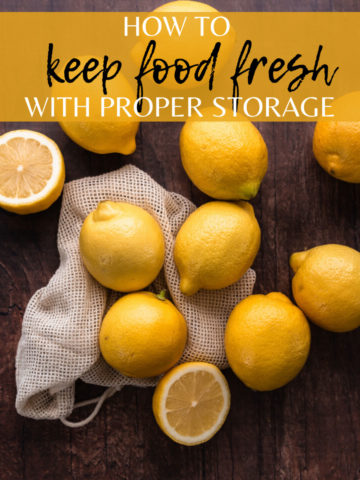




Paulina says
Thank you so much for this article. I'll definitely use it as a resource in my meal planning. Love the emphasis on balance and self care - that's what good eating is all about!! 😀
Libby Bloom says
I'm so glad you found it helpful! And I agree - our physical AND mental health are important considerations when working on planning meals!